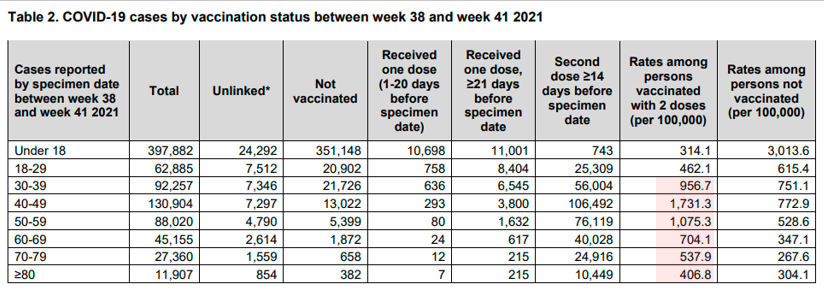
While my conclusion could be right, but I deleted my previous thread because the date interval does not represent that they got sick during that time. This was the date for the first vaccine doses. But it shows that people who got the first doses during winter became sicker. 



Their studies have a few anomalies as well. In the supplementary document, they showed one-dose vaccinated patient's data endpoint as 8/27/2021. But in Table 1 (main article), the end date is shown as of 9/16/2021. # of the final analytical sample also differs from Table 1. 

Anyway, considering 8/27/2021 as endpoint and vaccine have zero effect on COVID, vax'd COVID cases are calculated for the following time interval from all cases that US reported:
12/10/20 to 3/1/21: 650628 (12%)
3/1/21 to 6/19/21: 1784325 (33%)
6/20/21 to 8/27/2021: 2948570 (55%)
12/10/20 to 3/1/21: 650628 (12%)
3/1/21 to 6/19/21: 1784325 (33%)
6/20/21 to 8/27/2021: 2948570 (55%)
From the article:
Time of first vaccination (Table 1)-
12/10/20 to 3/1/21: 650628 (38%)
3/1/21 to 6/19/21: 1784325 (54%)
6/20/21 to 9/16/2021: 2948570 (8%)
Time of first vaccination (Table 1)-
12/10/20 to 3/1/21: 650628 (38%)
3/1/21 to 6/19/21: 1784325 (54%)
6/20/21 to 9/16/2021: 2948570 (8%)
Now the two analyses are not comparable. Age will matter because elderly got vaccines first, but again elderly unvax'd were also likely the COVID patient. therefore, it may counterbalance. But you can get a qualitative picture from percentage differences.
Because a small % of people were vax'd (one dose, 17.4% in USA on March 1st, 2021), we would expect fewer COVID patients. However, the article shows a lot of COVID patients who received vaccines during the winter months (12/10/20 to 3/1/21).
Vaccine indeed helps in a higher number of covid cases during virus favorable weather. The following study also supports this claim.
https://twitter.com/mahmudme01/status/1478886068342640643
• • •
Missing some Tweet in this thread? You can try to
force a refresh








